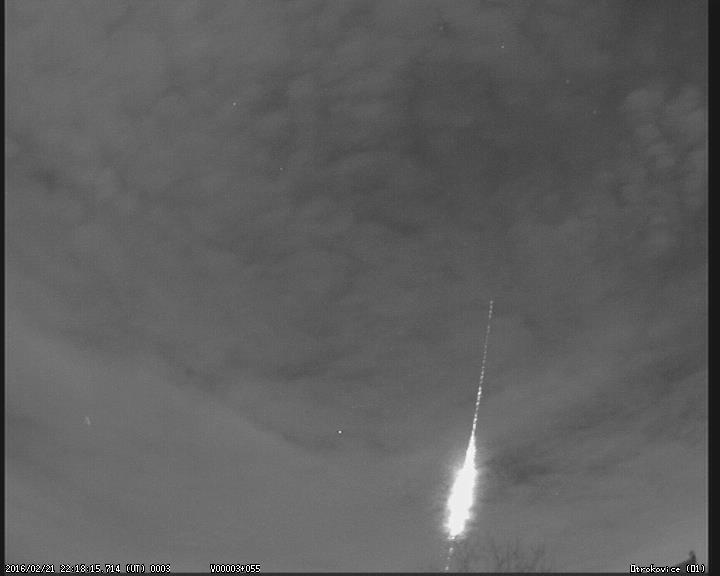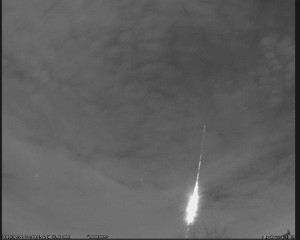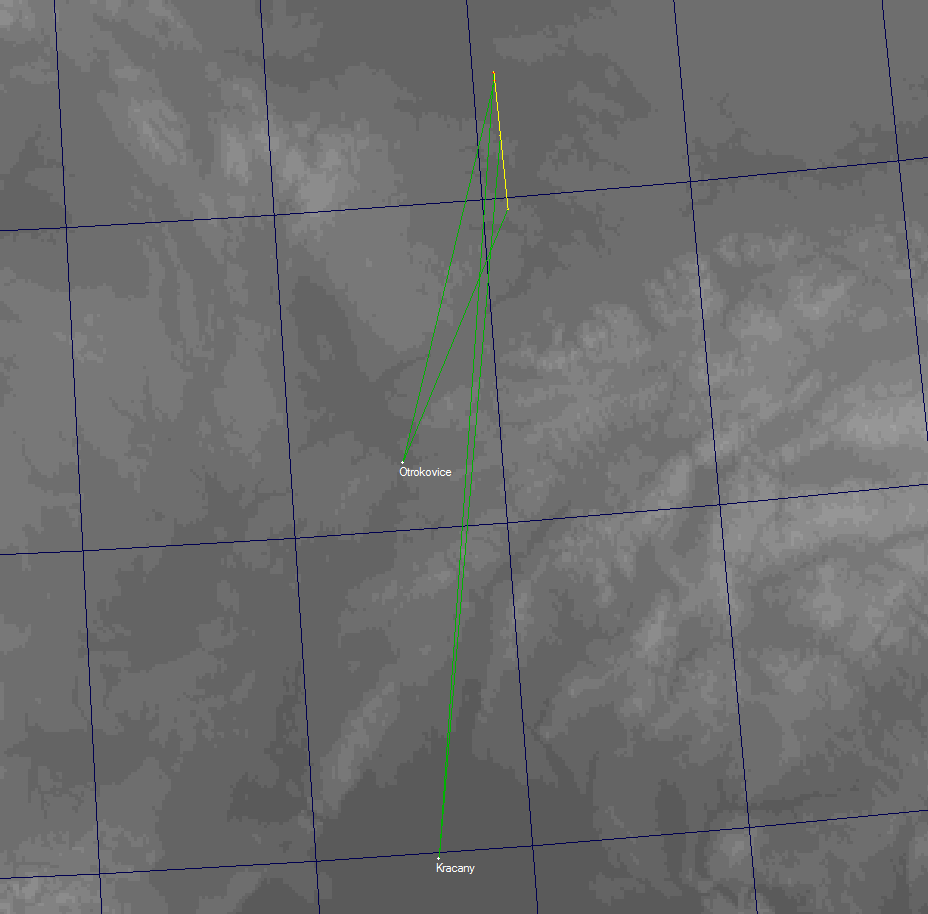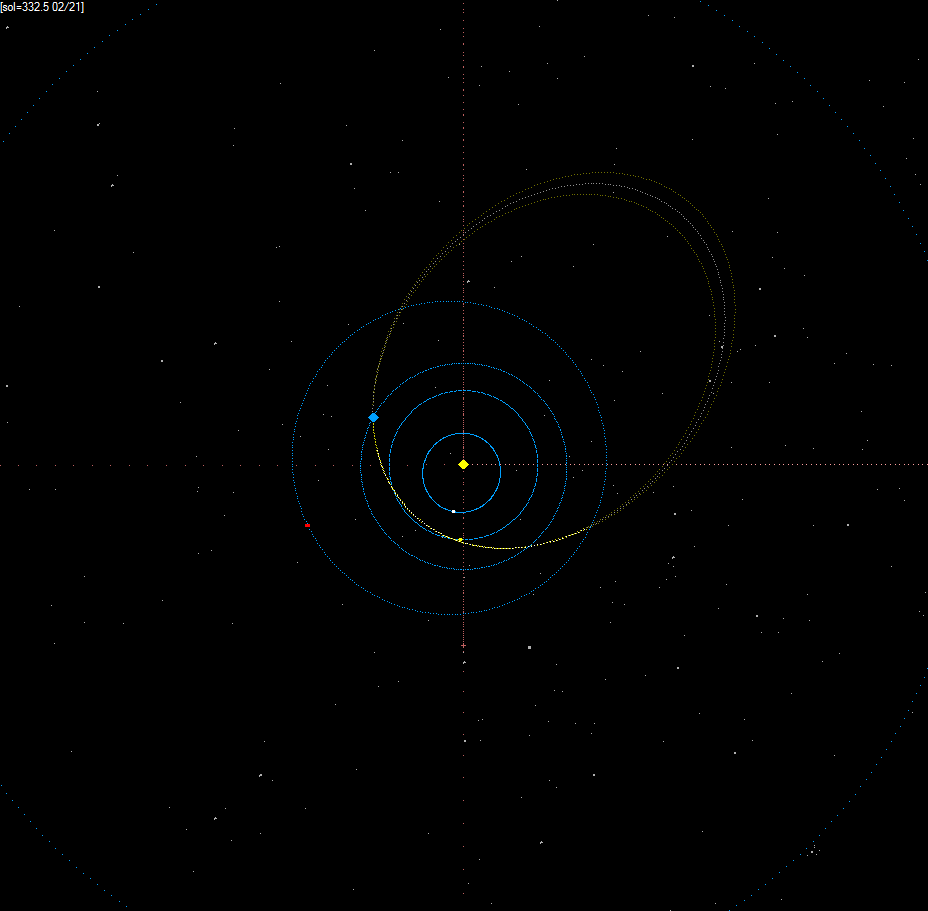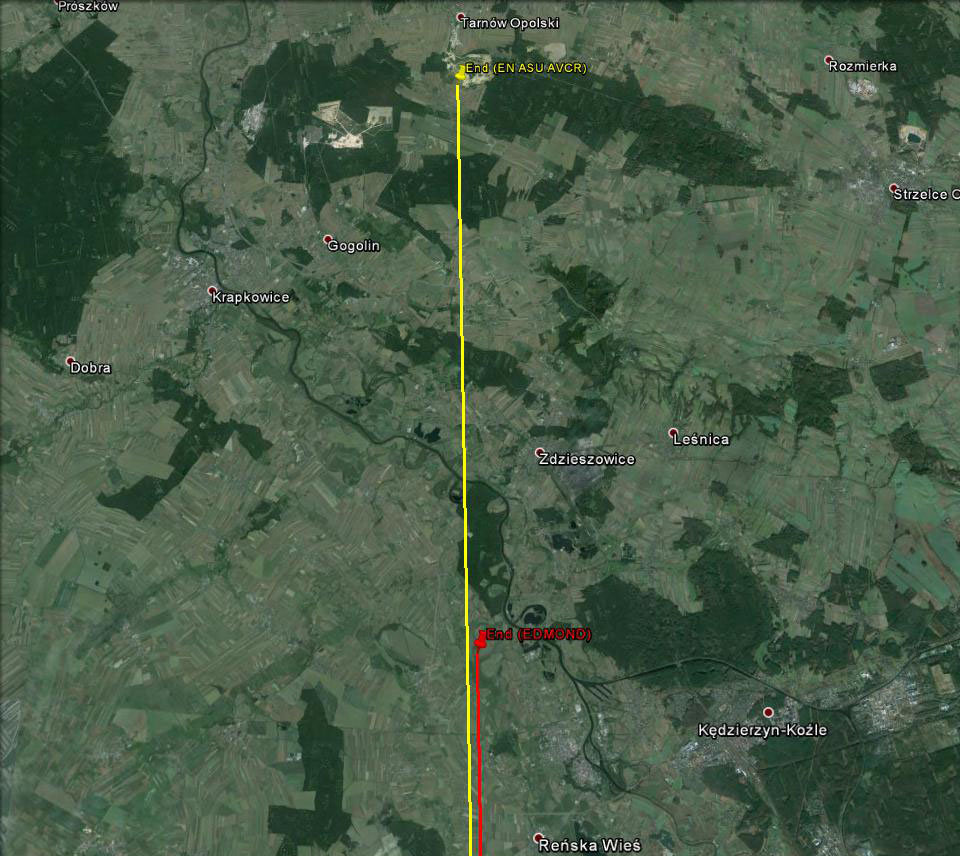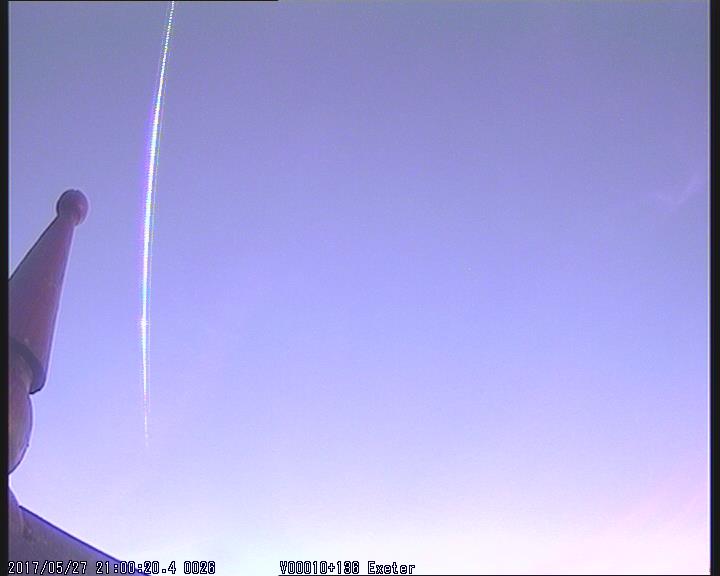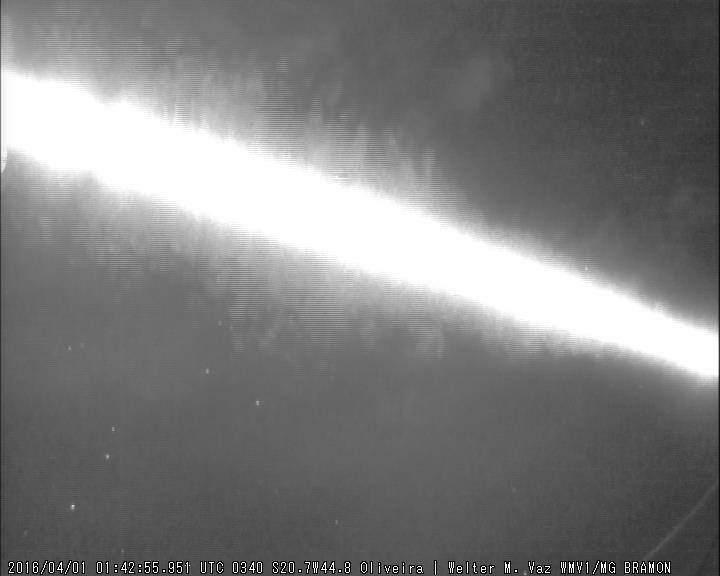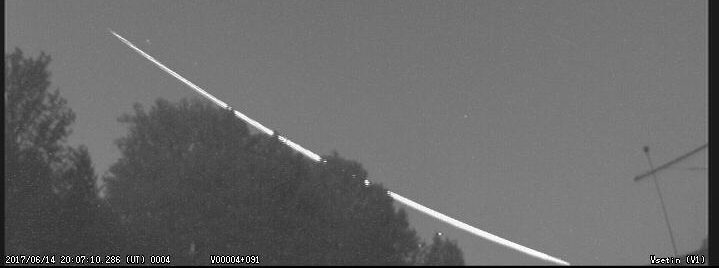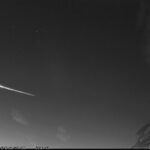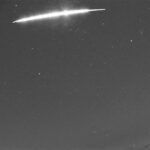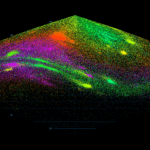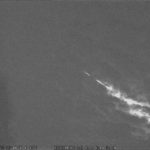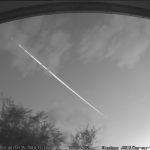Due to the inclement weather over the Czech Republic in February, and thus the lack of fireballs typical for this time of year, we are returning to a very bright meteor that was seen February 21, 2016 at 22:18:15 UT (23:18:15 CET). Beginning of the projection of atmospheric path of the bolide was located inside the territory of the Czech Republic, the bulk of the path, however, took place over the Opole voivodship in Poland.
Meteor activity in February and March
At this time of the year is not in activity any significant meteor shower and overall activity of the meteor showers is very low, also the sporadic background is at a minimum of its activities during the year. February and March also belongs in the Czech Republic to the months with the worst of the weather and therefore the activity of visual observers is very small. This period thus belong to the least known periods throughout the calendar year. In that period are mostly active meteor showers belonging to the Antihelion source. In the months of January, February and March prevails activity of the Virginid-Leonids complex, which is then transferred to the Scorpio-Sagittarids komplex in April. The common characteristic of the meteors belonging to the Antihelion source is relatively low geocentric speed, most of the meteors from this source have a speed between 20-30 km/s.
Evening fireball in the sky with the full moon
Despite the relatively unfavorable weather conditions mainly over the territory of Moravia and Silesia, the phenomenon was observed visually by many people in the Czech Republic. Overview report of the ASÚ AVČR contains 8 sighting reports (at the date of June 25, 2016) from the general public about bolide observation. There is only 1 report (from northern Austria) in fireball reporting form named Fireball report on the IMO (International Meteor Organization) pages. The circumstances of this event were described in great detail in an article by RNDr. Pavel Spurný, CSc. (ASÚ AVČR Ondřejov, 24.2.2016) which was published on the website of the Astronomical Institute of the AVČR. These results are from the observation of very accurate bolide cameras that are part of the European fireball network (EN).
The amateur network CEMENT (Central European Meteor Network) captured this phenomenon, despite adverse weather conditions, on the three cameras, two were located in central Moravia (Kroměříž, Otrokovice) and one on the southern Slovak (Kračany). The cameras failed to capture the end of the event, due to the low elevation of the end of the visible part of fireball atmospheric path. At the station Kračany was the fireball visible through a continuous cloud layer. At the station Otrokovice phenomenon was mainly in the area of the crumbling low clouds. At the station Kroměříž was through almost continuous layer of low clouds recorded only part of the path, especially around the body fragmentation. Because of the fragmentation of the body is usually associated with abrupt brightening of the bolide, it was not possible to use data obtained from the Kromeriz station to calculate atmospheric path of the fireball. Due to the unfavorable weather also was not observed spectrum of this bolide by the spectrographs at Valašské Meziříčí observatory.
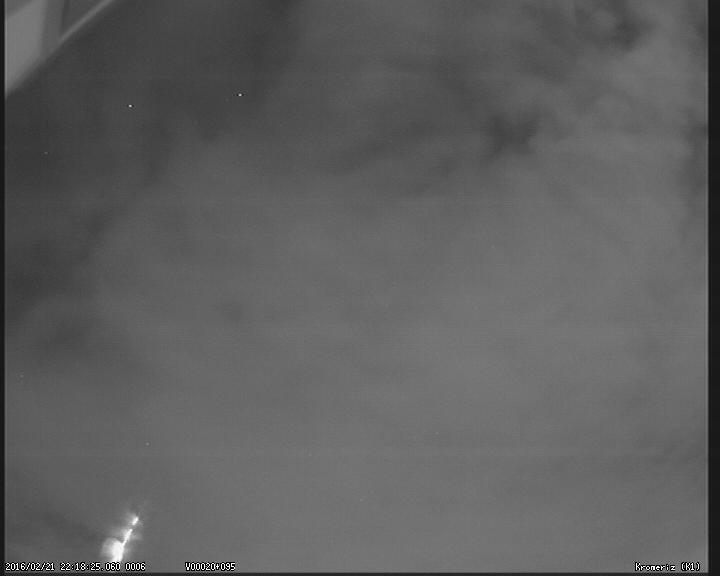 |
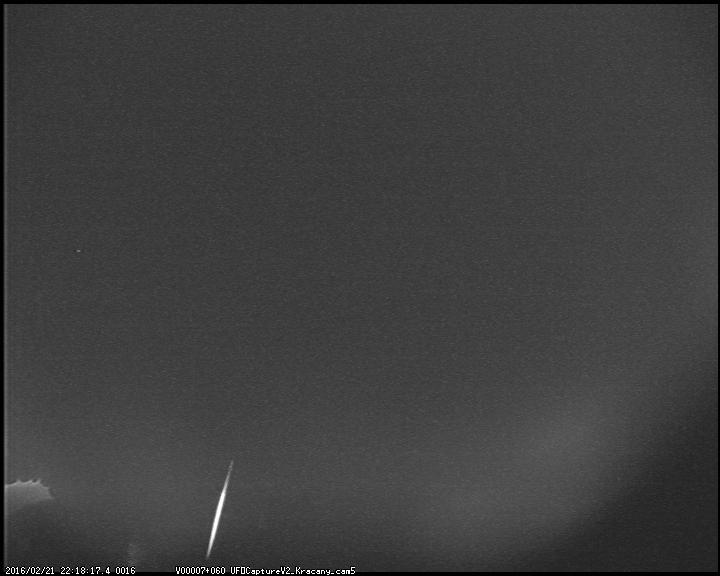 |
| The summary image of the bolide 20160221_221815, station Kroměříž ENE. Author: Jakub Koukal | The summary image of the bolide 20160221_221815, station Kráčany N. Author: UMa Astronomy |
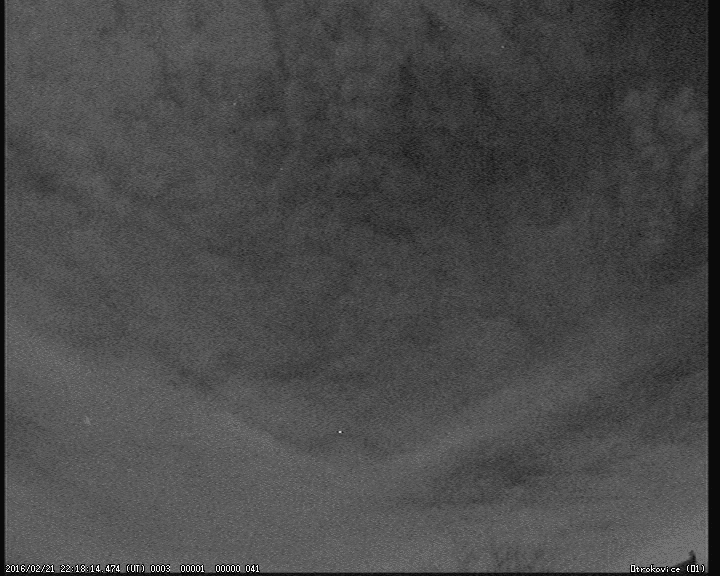 |
| The video of the bolide 20160221_221815, station Otrokovice N. Author: Michal Čechmánek |
To calculation of the the atmospheric path of the bolide and orbit of the meteoroid in the Solar system were used recordings from the stations Kračany and Otrokovice. The projection of the beginning of the atmospheric path was located at coordinates N49,966° E18,121° near the village of Borova (CZ), the height of the bolide at this time was 89.3 kilometers above the Earth’s surface. The end of the projection of the atmospheric path was located at coordinates N50,366° E18,097° near the village of Poborszów (PL), the height of the bolide at this time was 51.7 kilometers above the Earth’s surface. The bolide was not captured along the entire length, from the station Otrokovice N phenomenon lasted for 2.82 s. The bolide reached absolute brightness -7.1m, which is not an maximum absolute brightness bolide throughout the flight due to the lack of the end of the atmospheric path. The 2D projection of the bolide trajectory in the atmosphere is shown below.
It was a slow meteor, its geocentric velocity before entering the Earth’s gravitational field was only 19,7 km/s (including the effect of the deceleration). The orbital elements of the meteoroid´s orbit were as follows : a = 2,06 AU (semi-major axis), q = 0,681 AU (perihelion distance), e = 0,670 (eccentricity), i = 10,2° (inclination), ω = 77,0° (argument of the perihelion), Ω = 152,5° (longitude of the ascending node). The bolide was one of the sporadic meteors with the observed radiant RA = 144,2°, DEC = -4,4°. The projection of the meteoroid orbit in the Solar system is shown above.
Comparison of the results of the European Fireball Network (EN) and CEMENT
The atmospheric path of this bright bolide was calculated independently from two different sources (EN and CEMENT), it is thus possible to perform the mutual comparison of the orbital elements. The projection of the atmospheric path of the bolide calculated on the basis of data from the CEMENT has a twist 0,1° to the atmospheric path from EN. The atmospheric path from the CEMENT is as a whole shifted eastward against of the path from the EN cameras, at the beginning of the path it is about 250 m, at the end it is about 310 m. The orbital elements and parameters of the atmospheric path from EN cameras are taken from the article, as well as the position of the projected beginning and end point of the bolide atmospheric path.
| European fireball Network | CEMENT | |
| Semi-major axis a (AU) | 1.68 | 2.06 |
| Perihelion distance q (AU) | 0.699 | 0.681 |
| Inclination i (o) | 9.0 | 10.2 |
| Eccentricity e (-) | 0.585 | 0.670 |
| Geocentric velocity vg (km/s) | 20.6 | 19.5 |
| Beginning height HB (km) | 89.1 | 89.3 |
| Terminal height HE (km) | 32.4 | 51.7* |
| Absolute brightness amag (m) | -10.4 | -7.1* |
Table 1.: Comaprison of the orbital elements and parameters of the atmospheric path of the bolide 20160221_221815 detected by the European fireball Network cameras and by the CEMENT cameras. Remark: * data can not be compared, from the CEMENT cameras was not captured the whole atmospheric path of the bolide

